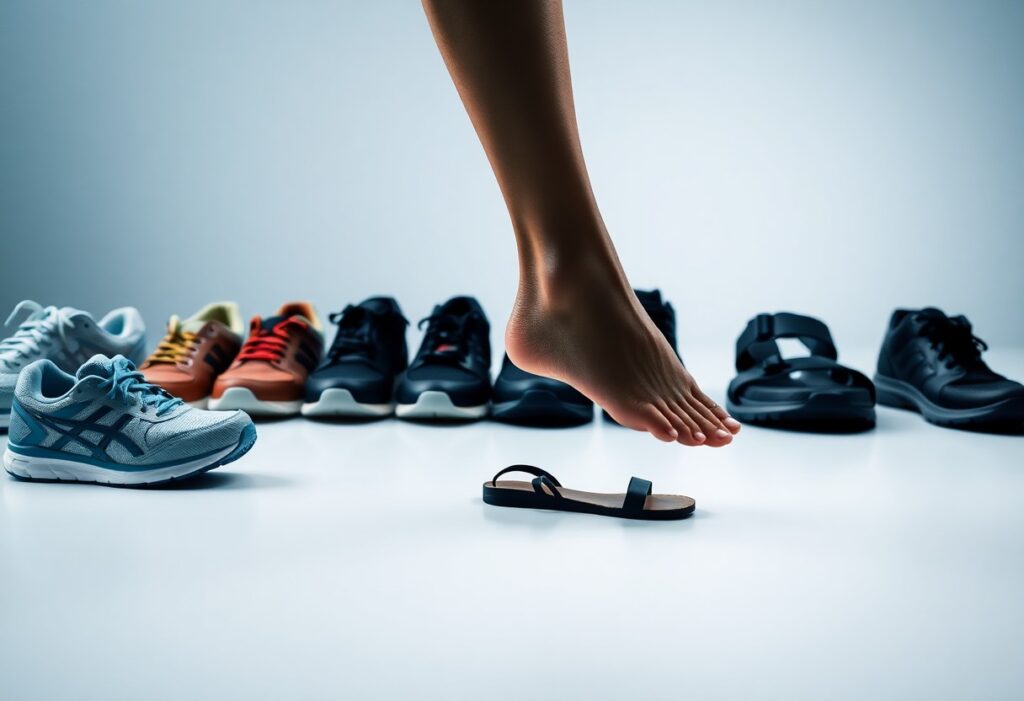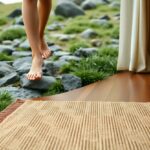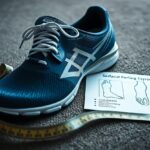
As you engage in daily activities, your choice of footwear plays a crucial role in enhancing your foot health or contributing to various issues. Many individuals wrongly assume that shoes featuring added cushioning and support are the ultimate solutions for foot discomfort; however, conventional footwear often inflicts more harm than benefits. Dr. Alissa Kuizinas, a renowned podiatrist based in Massachusetts, advocates for barefoot shoes or minimalistic footwear, which can lead to stronger and healthier feet. By choosing footwear that allows your feet to function naturally, you can significantly diminish the risk of developing foot complications and enhance your overall foot wellness.
Understanding the Detrimental Effects of Traditional Footwear on Your Foot Health
While conventional shoes may provide fleeting relief from foot discomfort, they can often aggravate existing conditions and introduce new complications, as Dr. Alissa Kuizinas notes. She highlights that the $133 billion shoe industry tends to prioritize aesthetic appeal and profit margins over genuine foot health, resulting in designs that can constrict and weaken your feet over time. This reliance on traditional footwear can create a vicious cycle, ultimately jeopardizing your foot health and leading to chronic issues that could have been prevented with wiser choices in footwear.
Critiquing the Shoe Industry’s Ineffective Solutions for Healthy Feet
At the core of this issue is the shoe industry’s misguided approach to promoting foot health, which often emphasizes adding excessive cushioning, support, and rigid construction without addressing the underlying causes of discomfort. This method fosters a false dependence on shoes that may actually endanger your foot health over time, resulting in a range of complications that could have been avoided through more thoughtful design principles. Recognizing these flaws is essential for making informed footwear choices that truly support foot health.
Identifying the Design Flaws Present in Conventional Footwear
Many traditional shoe designs feature narrow toe boxes, rigid soles, and excessive cushioning that can hinder natural foot movement, ultimately leading to weak and dysfunctional feet. Dr. Kuizinas emphasizes that footwear should provide a barrier against external hazards while allowing for natural movement. The ideal shoe design should prioritize natural foot function and incorporate minimalist features, such as wider toe boxes, flexible and flat soles, and minimal cushioning to foster foot health.
By switching to barefoot shoes or minimalistic footwear, you can effectively strengthen your feet and enhance your overall foot wellness. Dr. Kuizinas champions a philosophy centered on utilizing as little shoe as possible, which allows your feet to function naturally and move freely. This is fundamental for maintaining optimal foot mechanics and preventing long-term issues.
Recognizing the Vital Importance of Natural Foot Movement
Footwear that restricts your foot’s natural movement can result in an array of foot problems and discomfort. It is essential to evaluate how your shoe choices influence your overall foot health and comfort levels to make informed decisions that promote well-being.
Analyzing the Impact of Footwear on Foot Mobility
To comprehend fully how shoes affect your foot’s mobility, it is necessary to scrutinize the specific designs and characteristics of your selected footwear. Traditional shoes typically include cushioning and support features that can inadvertently restrict your foot’s natural movement, leading to weak and dysfunctional foot structures over time. This limitation can hinder your feet from gaining the strength and flexibility essential for optimal performance.
Understanding the Extensive Benefits of Allowing Natural Foot Mobility
The advantages of permitting your feet to move freely are significant, as strong feet are crucial for overall foot health. By selecting minimalistic shoes or barefoot footwear, you enable your feet to operate as intended, fostering strength and resilience. Movement is vital for developing strong feet, and when you are limited by conventional footwear, you put yourself at risk of encountering various foot issues and discomfort.
Conversely, embracing minimalistic shoes or barefoot options can greatly enhance your foot health by allowing for natural movement and encouraging strength-building. By making thoughtful choices in footwear, you can minimize your risk of developing foot problems and enhance your overall foot wellness.
Exploring the Concept of Functional Footwear for Enhanced Foot Health
Understanding the concept of functional footwear is critical, as these shoes prioritize both foot health and natural movement. Functional shoes are specifically designed to enable your feet to operate as they were intended, eliminating the reliance on excessive support or confinement that can lead to long-term issues.
Defining Key Attributes of Functional Footwear for Optimal Performance
Through thorough research and experimentation with various shoe styles, you’ll discover that functional footwear possesses unique characteristics, including a wide toe box, flat and flexible soles, along with minimal cushioning and support. These features facilitate your feet’s natural movement, promoting stronger and more capable foot mechanics.
The Multifaceted Advantages of Functional Footwear in Boosting Foot Health
Wearing functional shoes offers numerous benefits, such as enhanced foot strength, reduced risk of injury, and improved overall foot health. These shoes allow your feet to work as intended, leading to stronger feet and better balance in your everyday activities. Functionally designed footwear is crafted to support your feet without imposing unnecessary restrictions, enabling them to move and flex naturally.
This design philosophy nurtures optimal foot health and lessens the likelihood of developing foot ailments. By choosing functional shoes like barefoot shoes or minimalistic options, you actively encourage healthy foot function and mitigate the risk of foot pain and injury. Transitioning to functional footwear may necessitate a gradual adjustment, but the long-term benefits for your foot health are immeasurable.
Identifying Essential Features for Optimal Functional Footwear
To achieve the best possible foot health, it is crucial to seek out shoes that incorporate specific features. The key attributes to consider include:
- Wide toe box
- Flat and flexible soles
- Minimal cushioning and support
Being aware of these characteristics will greatly assist you in selecting footwear that fosters healthy foot function and support.
Understanding the Crucial Role of Wide Toe Boxes and Flexible Soles
A critical feature of functional footwear is a wide toe box, which allows your toes to spread naturally. This thoughtful design prevents toe jamming and other discomfort-related issues that could lead to chronic foot pain and complications, supporting your overall foot health.
Recognizing the Value of Minimal Cushioning and Support for Foot Function
In addition to a wide toe box, functional shoes should also feature minimal cushioning and support. This design element is vital for allowing your feet to move naturally while simultaneously strengthening foot muscles, thereby decreasing the risk of foot issues.
It is important to emphasize that minimalistic footwear, such as barefoot shoes, can significantly bolster your foot health by allowing your feet to function freely. By opting for footwear with minimal cushioning and support, you can enhance muscle strength in your feet and lower the likelihood of injuries. This strategic choice not only improves your overall foot health but also reduces the chances of experiencing chronic pain. Therefore, prioritizing shoes that facilitate natural movement without excessive cushioning or support is crucial.
Successfully Transitioning to Functional Footwear: A Comprehensive Guide
Having recognized the significance of functional footwear, it’s time to begin your transition. Contrary to the widespread belief that increased cushioning and support equate to greater comfort, your focus should be on minimalistic shoes or barefoot shoes that promote your feet’s natural functioning.
Practical Tips for a Seamless Transition to Functional Footwear
Despite any initial reservations, you can start integrating functional shoes into your daily life by following these straightforward recommendations:
- Begin with short walks, gradually increasing your distance
- Select shoes that feature a wide toe box and flat soles
- Choose minimal cushioning and support
The key is to give your feet ample time to adjust to the new footwear while simultaneously strengthening the muscles in your feet for optimal performance.
Recognizing the Importance of Patience During Your Transition to Functional Footwear
Transitioning to functional footwear requires patience and a gradual approach. Shoes that are overly minimalistic can lead to discomfort and pain if your feet are not used to them. Taking a slow and steady path is crucial, allowing your feet to acclimatize to the new footwear.
Footwear options such as barefoot shoes or minimalistic shoes can provide substantial benefits for your foot health, but it is essential to incorporate them gradually. Overuse or improper sizing can lead to injuries or ongoing discomfort. The ultimate goal is to fortify your foot muscles while improving your overall foot health, so patience is key; rushing through the transition is ill-advised. The rewards will be significant, including enhanced balance, reduced pain, and stronger feet.
Fostering Strong and Functional Feet Through Thoughtful Footwear Choices
Even in a culture where shoes with excessive cushioning and support dominate the market, you can cultivate strong and functional feet by making mindful choices about your footwear.
Investigating the Connection Between Foot Strength and Overall Health
Alongside various health factors, foot strength serves a pivotal role in your overall well-being, influencing your balance, posture, and movement capabilities.
How Functional Footwear Contributes to Developing Strong Feet
Functionally designed shoes, characterized by a wide toe box, flat and flexible soles, and minimal cushioning, are essential for cultivating strong feet, as they support natural movement. Indeed, wearing functional shoes or barefoot shoes can significantly aid in developing stronger foot muscles and enhancing your overall foot health. By granting your feet the freedom to move and function naturally, you can mitigate the risk of foot problems while optimizing your balance and stability. As you transition to minimalistic shoes, you should anticipate improvements in your walking technique and an overall sense of well-being.
By taking proactive measures to manage your foot health, you can select shoes that support your feet’s innate functions rather than hinder them. Opting for barefoot shoes or minimalistic options that allow your feet to operate naturally will foster strength and stability over time. Begin your journey by seeking footwear with a wide toe box, flat and flexible soles, and minimal cushioning and support, while exercising patience as you transition to a more natural walking style.
The Article A Podiatrist’s Guide to How Shoes Affect Your Foot Health appeared first on My Shoes Finder
The Article How Shoes Impact Your Foot Health: A Podiatrist’s Insights Was Found On https://limitsofstrategy.com
The Article Shoes and Foot Health: Insights from a Podiatrist First Appeared ON
: https://ad4sc.com





Comments are closed